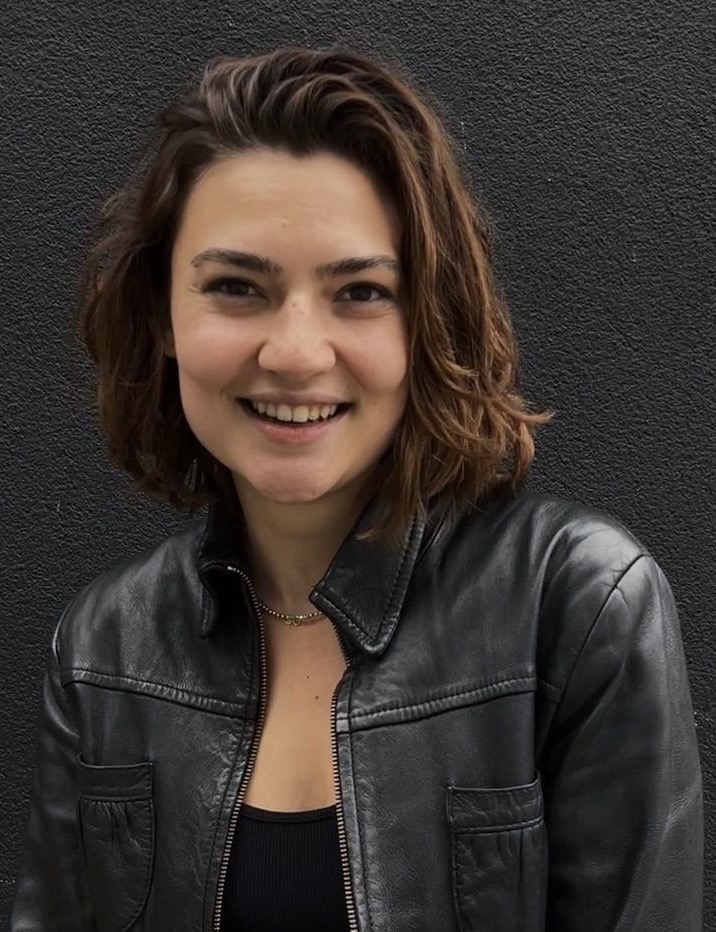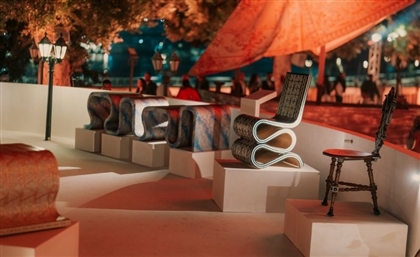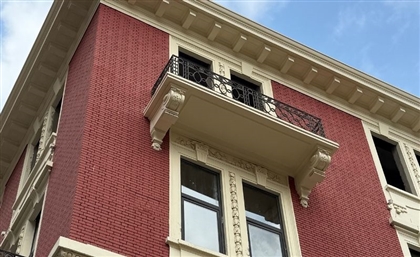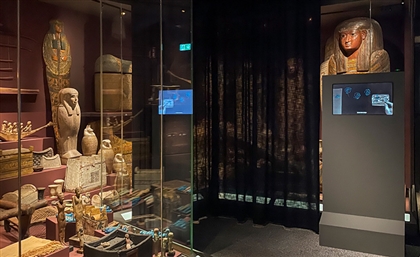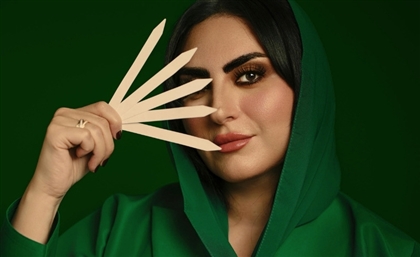Reimagining Nature with TAM Gallery at Aisha Fahmy Palace
At Cairo Design Week, TAM Gallery turns Aisha Fahmy Palace into a layered ode to nature, from stitched gardens to sculpted wood.
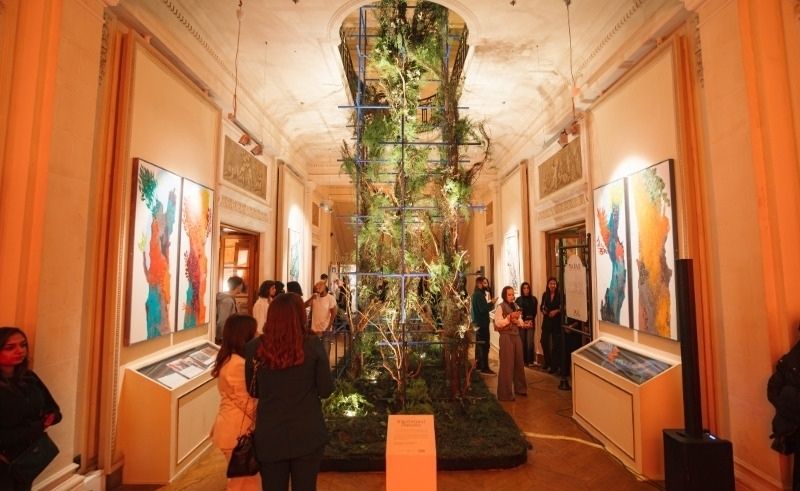
The first thing you notice at Aisha Fahmy Palace is how much nature is already inscribed into the building itself. Painted ceilings bloom with florals, parquet floors unfurl like the rings of an old tree, and mirrors framed in gilded leaves catch the light.
So when Cairo Design Week arrives, the palace doesn’t so much transform as slip into a new register. Under the umbrella of “Reimagined,” its rooms become a series of portals: you enter through a striking installation where trees and steel bloom together at the centre, step into one space that feels like a 19th-century salon with a tailor cutting bespoke dresses, and then another that stages an intimate dinner party by the Nile.
Threading these rooms together are paintings curated by TAM Gallery that line the halls, each telling their own story of craft and culture.
-4dfe87e7-0f9c-469d-bbe0-d668941ebf56.jpg) Within this flow, TAM Gallery’s exhibition – curated by Farida Sultan – was conceived to feel like a natural extension of the palace, not a disruption: she sought out artists whose intricate, research-driven practices could mirror the building’s own ornate details, reimagining nature through scraps, memories, and reclaimed matter.
Within this flow, TAM Gallery’s exhibition – curated by Farida Sultan – was conceived to feel like a natural extension of the palace, not a disruption: she sought out artists whose intricate, research-driven practices could mirror the building’s own ornate details, reimagining nature through scraps, memories, and reclaimed matter.
-ae4a5e65-32d7-4c5a-afc1-3237aec8aa14.jpg) Threading through it all is a contemporary longing for the natural world. “We're just in such an age that we're drifting away from nature so much,” Sultan reflects. “Everyone has this curiosity for nature. An attempt to try and make up for life in the city and life in this digital age.” At Aisha Fahmy Palace, that longing takes the form of fabric, wood, clay, maps, and river-marked driftwood – each one a small act of return.
JACQUELINE BOSHRA
Threading through it all is a contemporary longing for the natural world. “We're just in such an age that we're drifting away from nature so much,” Sultan reflects. “Everyone has this curiosity for nature. An attempt to try and make up for life in the city and life in this digital age.” At Aisha Fahmy Palace, that longing takes the form of fabric, wood, clay, maps, and river-marked driftwood – each one a small act of return.
JACQUELINE BOSHRA
-6e58197d-cb9b-4308-b9f4-de5e888b64fa.jpg) Medium: Recycled fabric and embroidery on Panel
Medium: Recycled fabric and embroidery on Panel
On the ground floor, Jacqueline Boshra’s textile panels glow like stitched gardens. Sultan calls her “the star of the show downstairs,” drawn to the way Boshra “interweaves recycled fabric and embroidery” and “follows the concept of reimagining in both the material she uses… almost like reworking the memory of these fabrics.”
Her panels are built from discarded clothing, sorted, cut, layered, and stitched into dense collages that feel in motion even when still. A former mother’s blouse, a curtain, a scrap from a sofa, are transformed into tactile landscapes, where colour and texture push forward like fields seen from above. Each fragment carries domestic history that is now composted into something new.
ABDELWAHAB ABDEL MOHSEN
-798eea7f-489a-4417-a8af-adf3f3e7eaab.jpg) Medium: Acrylic on Canvas on Panel
Medium: Acrylic on Canvas on Panel
Abdelwahab Abdel Mohsen offers a different kind of immersion: meditative, tidal, anchored in the Nile Delta. His carved and painted panels dissolve earth and water into layered bands of colour, where lakes, waves, dunes, and wild grasses hover between abstraction and landscape. Sultan was keen for visitors’ first encounter to be rooted in this sense of place, describing his work as “a nice way to… begin the journey for the audience who are walking in, and then slowly, slowly get more detailed as you go to the top.” In a palace overlooking the Nile, Abdel Mohsen’s abstractions don’t illustrate the river so much as tune the room to its tempo – a lyrical prelude to the denser works upstairs.
FARIDA IBRAHIM
-cf9a89b5-7c79-43c7-8c62-2bdcb841154e.jpg) Medium: Painting on Canvas - Caravan Display
Medium: Painting on Canvas - Caravan Display
Farida Ibrahim’s contribution unfolds next to the staircase across a folding caravan screen, reinterpreting a once-ubiquitous household object that balanced privacy and ornament. Her painted panels abstract the caravan’s silhouettes and motifs into layered compositions that explore how domestic forms carry cultural memory.
Positioned within Sultan’s curatorial framework, Ibrahim’s work becomes a hinge between past and present. It is both screen and painting, inviting viewers to consider how the intimate furnishings of daily life might be recast as contemporary sculpture.
Hany Mgaly El Fikky-cb50369c-cec6-4842-a2c8-fbcbdf5885b4.jpg)
Medium: Mixed media on wood
Upstairs, the work grows denser and more architectural. A monumental portrait by Hany Mgaly El Fikky is assembled from recycled wood – old furniture, discarded planks, even, as he once told her, a piece of his father’s bed. “He uses old furniture and wooden scraps and breaks it into pieces and then creates something new out of it,” Sultan says.
The result feels almost tectonic: a face emerging from strata of domestic life, proof, in her words, that the exhibition touches “not just recycling materials, but also the memory of these objects and how we're repurposing these memories now.”
MOSTAFA EL HUSSEINY-defd23be-aa47-4a16-a957-e374eceb2d6e.jpg) Medium: Mixed Media on Cardboard
Medium: Mixed Media on Cardboard
Next to it, works by Mustafa El Husseiny transform family histories and spoken memories into visual cartographies. By reclaiming lost fragmented moments, memory becomes traceable – almost tactile.
His research-based canvases weave coordinates, cities, and incidents into layered surfaces that Sultan describes as “a kind of like a google map location but out of memory.” Digging into the roots of his family, he creates artworks that follow this process of uncovering the past, a jigsaw puzzle to piece together and give memory and renewed form.
MOHAMED SAMIR EL GENDY-78a770ad-60cf-4e78-b555-8508d91da409.jpg)
Medium: Glazed Ceramic
Mohamed Samir El Gendy approaches ceramic as collage. His vases and sculptural forms are built from fragments that have been repurposed, reshaped, and reassembled into entirely new bodies. Sultan was drawn to the way he “carves different patterns onto the clay and then kind of collages them together.”
The resulting pieces feel both ancient and speculative, as if archaeological shards had decided to rearrange themselves into new constellations.
- Previous Article Egyptian Creative Amir Fayo Debuts ‘6901’ Store in West El Balad







